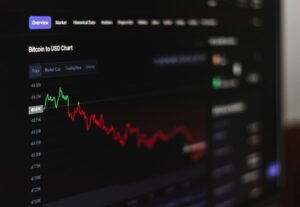The Importance of Fibonacci Ratios in the Forex ABCD Pattern
When it comes to forex trading, there are many tools and strategies available to help traders make informed decisions. One such tool is the Fibonacci ratios, which play a crucial role in identifying and trading the ABCD pattern in forex.
The ABCD pattern is a popular harmonic trading pattern that consists of four distinct price points – A, B, C, and D. This pattern can be found in various timeframes and is used by traders to predict potential price reversals or continuation patterns.
Fibonacci ratios are derived from the Fibonacci sequence, a mathematical sequence where each number is the sum of the two preceding ones (e.g., 0, 1, 1, 2, 3, 5, 8, 13, 21, etc.). These ratios, such as 0.382, 0.618, and 1.618, have unique mathematical properties that are found throughout nature and financial markets.
In the context of the ABCD pattern, Fibonacci ratios are used to measure the potential retracement and extension levels between the price points A, B, C, and D. Traders rely on these ratios to determine the precise entry, stop-loss, and take-profit levels for their trades.
The most commonly used Fibonacci ratios in the ABCD pattern are 0.382, 0.500, 0.618, 1.272, and 1.618. These ratios represent the potential retracement and extension levels that price may reach during a trend.
To apply Fibonacci ratios to the ABCD pattern, traders start by identifying the A and B points. The distance between these two points is then measured, and Fibonacci retracement levels are drawn from the B point. These levels help determine the potential retracement levels where the C point may form.
Once the C point is established, Fibonacci extension levels are drawn from the A to B distance. These extension levels provide potential targets for the D point, indicating where the price may reverse or continue the trend.
For example, if the price moves from A to B, and then retraces to the 0.618 Fibonacci retracement level, traders can anticipate the formation of the C point. From there, they can project the potential targets for the D point using Fibonacci extension levels.
When trading the ABCD pattern, Fibonacci ratios act as a guide for traders to determine the strength of a potential reversal or continuation. The more Fibonacci ratios align with other technical indicators or support/resistance levels, the higher the probability of a successful trade.
Moreover, Fibonacci ratios not only provide entry and exit levels but also help traders manage risk effectively. By placing stop-loss orders below or above key Fibonacci levels, traders can limit their losses if the price does not behave as expected.
Additionally, Fibonacci ratios can be used in conjunction with other technical analysis tools, such as moving averages, trendlines, or oscillators, to confirm the validity of the ABCD pattern and increase the overall accuracy of the trade.
In conclusion, Fibonacci ratios play a significant role in identifying and trading the ABCD pattern in forex. These ratios provide traders with valuable information about potential retracement and extension levels, helping them determine entry, stop-loss, and take-profit levels.
By incorporating Fibonacci ratios into their trading strategy, forex traders can enhance their decision-making process and increase their chances of success. However, it is important to remember that Fibonacci ratios are not foolproof and should be used in conjunction with other technical indicators and risk management strategies.





